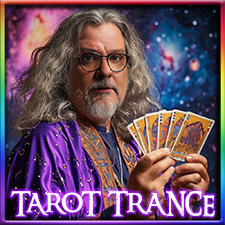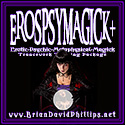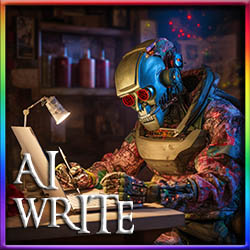
Insight Moments in Film
Introduction<

The magic of cinema often lies in its power to surprise, enlighten, and reveal, bringing audiences to sudden moments of understanding or epiphany. These moments, where a character or the audience suddenly pieces together previously scattered narrative clues, are not just dramatic turns but are pivotal to the emotional and psychological engagement with the film. Such revelations can fundamentally alter our perception of the story, deepening the narrative complexity and enhancing our emotional investment.
Defining the Moment: In cinematic terms, an epiphany, eureka, or aha moment refers to a point in the narrative where critical information is revealed, illuminating uncertainties or mysteries that have been brewing. This could be a character realizing the true identity of another, uncovering a hidden motive, or even the audience discovering a twist in the plot that changes the entire narrative landscape. These moments are crafted with care, positioned at climactic points to ensure maximum impact on the audience’s experience.
Significance in Storytelling: Such moments are quintessential in genres that rely on suspense and mystery, but they are also found in dramas and comedies where character development hinges on personal revelations and growth. They serve as fulcrums, shifting the narrative arc and propelling the story towards resolution or, sometimes, further complication. The strategic placement and execution of these moments not only fulfill narrative functions but also evoke strong emotional responses, making the story memorable and often, rewatchable.
Purpose of the Essay: This essay explores how filmmakers and writers craft these epiphany moments within their narratives. It delves into the techniques employed to build up to these insights and examines their psychological and emotional impact on the audience. Through a detailed analysis of various films across different genres, this essay will illustrate how these crafted moments harness the power of realization to deepen the viewer’s engagement and enhance the storytelling experience.
In the coming sections, we will dissect the methodologies behind these narrative devices, explore their varied impacts on audiences, and analyze examples from seminal films that exemplify the art of the cinematic epiphany. Each example will not only highlight how these moments are constructed but also why they resonate so deeply with viewers, ensuring a lasting impact on the cinematic arts.
Crafting Epiphany Moments<

Scriptwriting Techniques: The foundation of any epiphany moment lies in the script. Writers employ several techniques to subtly lay the groundwork for these revelations. Foreshadowing is a primary tool, where early hints or clues are planted in the narrative that might not initially seem significant but later become crucial to understanding the epiphany. For example, in Christopher Nolan’s Memento, the disjointed narrative structure mirrors the protagonist’s memory disorder, with clues about his condition and motivations peppered throughout that only coalesce into understanding in the final scenes. Symbolic motifs are also used to underscore thematic epiphanies. In The Sixth Sense, the color red is used throughout the film to denote the presence of the supernatural, culminating in the famous twist where the protagonist realizes he has been dead all along.
Directorial Choices: Directors play a pivotal role in executing epiphany moments. The use of camera angles, lighting, and the timing of revelations greatly influences how these moments impact the audience. A director might choose a close-up to capture the character’s realization, ensuring the audience feels the weight of the moment intimately. In Fight Club, David Fincher uses a series of quick cuts and flashbacks during the protagonist’s epiphany about Tyler Durden’s true nature, effectively sharing the character’s sense of shock and revelation with the audience. Cinematic techniques like these not only enhance the drama but ensure that the audience and the character’s revelations are synchronously experienced.
Editing and Sound Design: Editing is crucial in manipulating how and when information is revealed to the audience. The pacing of scenes leading up to the epiphany can build tension and anticipation, making the revelation more impactful. Sound design also plays a critical role in emphasizing these moments. A sudden silence, a crescendo in the score, or a stark sound effect can all heighten the dramatic effect of the epiphany. In The Usual Suspects, the editing sequence where Kujan drops the coffee cup, combined with the accompanying score, perfectly aligns the audience’s realization with that of the character as they piece together Verbal Kint’s true identity as Keyser Söze.
Each of these techniques—scriptwriting, directing, and editing—works in concert to create a powerful epiphany moment. These moments are not just plot points but are pivotal experiences that engage the audience deeply, both intellectually and emotionally. Through careful planning and execution, filmmakers ensure that these revelations are both surprising and satisfying, providing a cathartic release from the built-up narrative tension.
Psychological and Emotional Impact<

Cognitive Engagement: Epiphany moments in films engage audiences cognitively, challenging them to piece together clues and anticipate plot developments. This active participation in the narrative process enhances the viewer’s investment in the storyline and its characters. For instance, in Gone Girl, the audience is led to construct a narrative about Amy’s disappearance based on the clues she leaves, which is dramatically upended in the second half of the film. This restructuring of the narrative requires viewers to reevaluate their understanding and assumptions, engaging their cognitive faculties intensely and making the viewing experience more compelling and participatory.
Emotional Resonance: The emotional impact of epiphany moments cannot be overstated. These revelations often lead to a profound empathetic connection with the characters. When a character experiences a significant realization, it often resolves emotional tension built up throughout the film, leading to a cathartic release for the audience. In The Shawshank Redemption, when Andy Dufresne’s intricate escape plan comes to light, the audience experiences a surge of relief and admiration, a direct result of the emotional buildup and payoff meticulously crafted through the narrative.
Narrative Satisfaction: The satisfaction derived from a well-executed epiphany moment is a key element in the storytelling experience. It provides a sense of closure and completeness that is psychologically gratifying. Films that successfully employ this technique, like The Prestige, where the intricacies of the rival magicians’ schemes are finally unraveled, leave the audience feeling rewarded for their intellectual and emotional investment throughout the film. The revelation recontextualizes earlier scenes, adding layers of meaning and satisfaction as the audience rethinks what they have previously watched.
These moments also have a lingering impact, affecting how viewers reflect on the story after it ends. The realization that occurs in Shutter Island—revealing the true nature of Teddy Daniels’ investigation—forces the audience to reassess the entire narrative, enhancing the film’s psychological impact and emotional depth long after the initial viewing.
Role of Empathy and Surprise: Epiphany moments also intensify the emotional stakes by leveraging empathy and surprise. When characters on screen undergo significant transformations or realizations, viewers often mirror these emotional responses due to their empathetic engagement with the characters. The surprise element, when effectively delivered, intensifies these feelings, making the emotional experience more profound. For example, in Primal Fear, when the audience discovers the true nature of Aaron’s personality, the shock is twofold—stemming from the twist itself and from the empathetic betrayal felt due to the character’s earlier portrayal.
Epiphany moments serve as crucial narrative tools that significantly enhance the psychological and emotional landscape of film. They not only ensure a dynamic and engaging storytelling process but also foster a deeper connection between the film and its audience, making the cinematic experience richly rewarding and often, profoundly moving.
Examples from Film<
Psycho (1960) : One of the most iconic epiphany moments in film history occurs when Lila Crane discovers Norman Bates’ mother, revealing not only her corpse but also the depth of Norman’s psychosis. This moment is the culmination of subtle clues and mounting tension, reshaping the audience’s understanding of the plot and its characters.
The Sixth Sense (1999) : The film’s twist ending, where Dr. Malcolm Crowe realizes he has been dead throughout the movie, serves as a perfect example of an epiphany that redefines the entire narrative. This moment forces the audience to reconsider all the previous interactions of the character, enhancing the film’s replay value as viewers look to see the clues they missed.
Contemporary Examples:
Gone Girl (2014) : Amy’s revelation that she has orchestrated her own disappearance serves as a pivotal moment of realization for both the characters and the audience, turning the perceived narrative on its head. The clever use of unreliable narration and misleading clues throughout the film builds to this shocking revelation, which dramatically alters the film’s direction and tone.
Arrival (2016) : The epiphany that Louise is experiencing memories of the future profoundly shifts the narrative structure and redefines the audience’s understanding of the story’s progression. This moment deepens the film’s themes of communication and choice, challenging viewers to reconsider the linear nature of time and the concept of predestination.
Genre-Specific Usage:
Mystery/Thriller: Shutter Island (2010) – Teddy Daniels’ realization that he is actually a patient and not a marshal investigating the hospital is a climactic twist that shifts the genre from a mystery to a psychological thriller, deeply impacting the viewer’s perception of the narrative and questioning the reliability of the protagonist.
Drama: Fight Club (1999) – The revelation that Tyler Durden is, in fact, the narrator’s alter ego is not just a twist but a profound commentary on identity and consumer culture. This epiphany reshapes every prior scene with Tyler, engaging the audience in a deeper reflection on the themes of the film.
Each of these examples showcases how epiphany moments are not just for plot twists but are integral to deepening thematic explorations and enhancing character development. They leverage the built-up narrative tensions and fulfill them in ways that are both surprising and satisfying, leaving a lasting impact on the audience.
Crafting Epiphanies

Throughout this essay, we have explored the intricacies of crafting epiphany moments in films and the profound impact these moments have on audiences. From the meticulous scriptwriting that lays the groundwork for such revelations to the directorial and editing techniques that enhance their delivery, it is clear that these moments are a product of deliberate and skilled storytelling.
Synthesis of Key Points: We examined how epiphany moments serve multiple narrative functions: they provide cognitive engagement as audiences piece together clues; they offer emotional catharsis following the buildup of tension; and they deliver narrative satisfaction by tying together loose ends in a meaningful way. These moments are not merely about surprising the audience but are pivotal in driving home the themes of the film and deepening the viewer’s emotional and intellectual involvement.
Evolution and Enduring Impact: The evolution of epiphany moments in cinema reflects broader changes in audience expectations and storytelling techniques. In an age where viewers are more sophisticated and demand more from their cinematic experiences, filmmakers are challenged to create ever more ingenious and impactful revelations. Films like The Sixth Sense and Fight Club have set high benchmarks for narrative surprises, influencing generations of storytellers and filmmakers.
The Significance of Narrative Epiphanies: These moments underscore the power of film as a medium not just to entertain but to enlighten and provoke thought. By engaging with these complex narratives, audiences are invited to reflect on larger themes—be it the nature of reality in The Matrix, the mechanics of grief and loss in Manchester by the Sea, or the moral complexities of justice in Primal Fear. Such films enrich our understanding of human experience and enhance our capacity for empathy and reflection.
Final Thoughts: As we continue to witness the evolution of storytelling in cinema, the crafting of epiphany moments remains a testament to the artistry and psychological acuity of filmmakers. These moments reaffirm the role of film as a mirror to the human condition, reflecting our fears, hopes, and the profound desire for understanding and connection.
Epiphany moments are a vital element in the tapestry of cinematic storytelling, woven through with the threads of human psychology and artistic expression. They illuminate the depths of character and plot, casting a revealing light that transforms both the narrative and our perception of it. As such, they are not just moments of revelation for the characters within the film but for us, the audience, as we navigate the complexities of the stories we love and the lives we live.
You Can Learn More

If you would like to learn more about using hypnosis techniques, consult our Core Skills program and other products found in our online store at http://briandavidphillips.net/store (you may wish to check out our package programs for even more value).
Our ErosPsyMagick+ program at http://briandavidphillips.net/erospsymagickplus is of particular interest as it has everything rolled into one comprehensive package . . . core skills, metaphysical magickal psychic, and eroticatrance ecstatic states.
If you’re in Taiwan and interested in hypnosis, check the services page linked to in the top left sidebar. Not in Taipei? Check the store for recordings in the same menu area as well as links to lots and lots of info and goodies. Of course, browsing this site will bring you to a digital ton of positive resources on a wide variety of topics as well.
Live Trance and Prosper,
Brian David Phillips
Trance Wizard
www.BrianDavidPhillips.net/blog
Tarot Decks and More
https://www.makeplayingcards.com/sell/wakingdreams




















